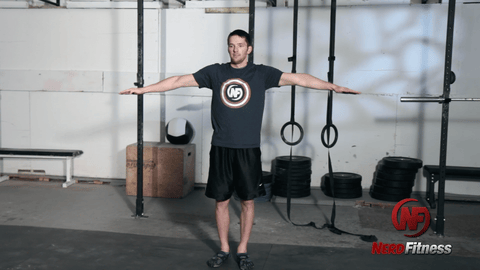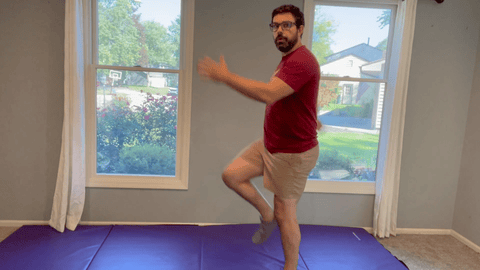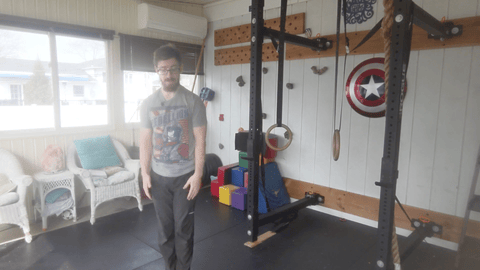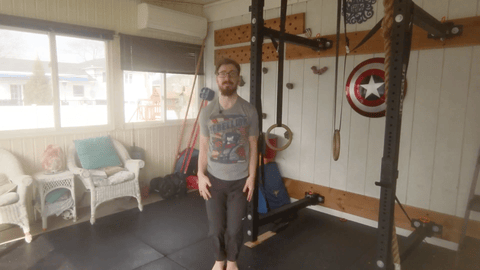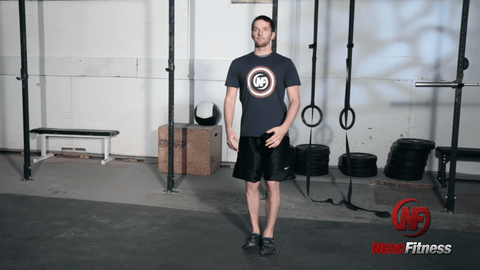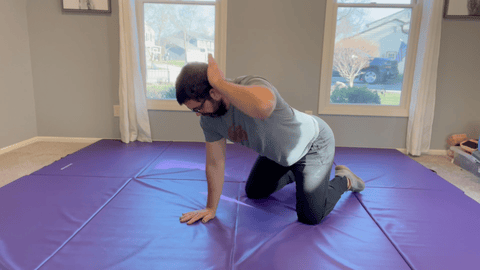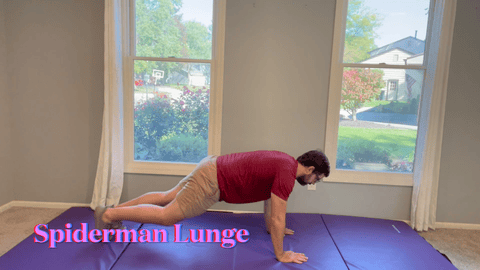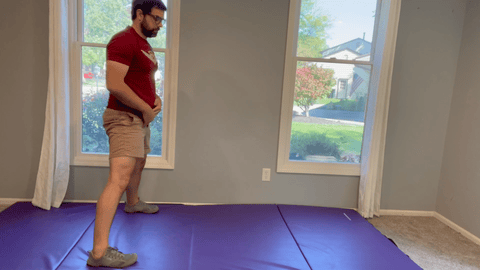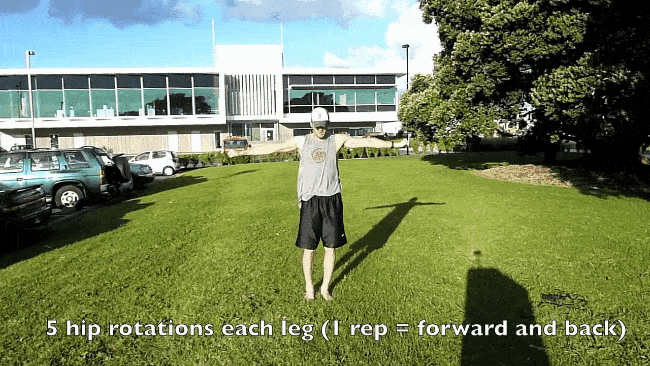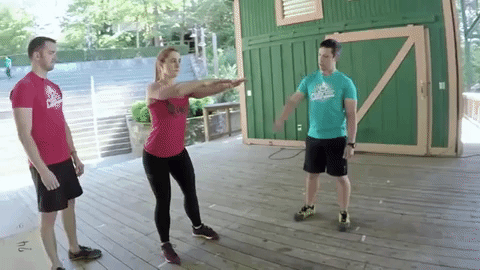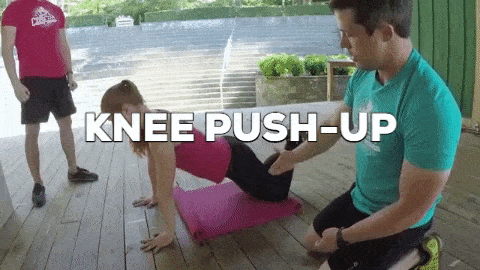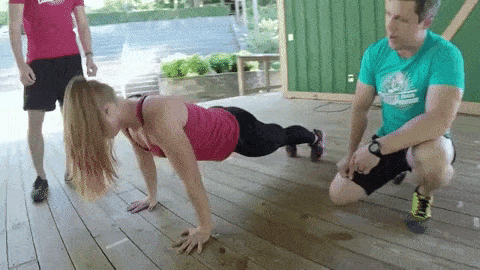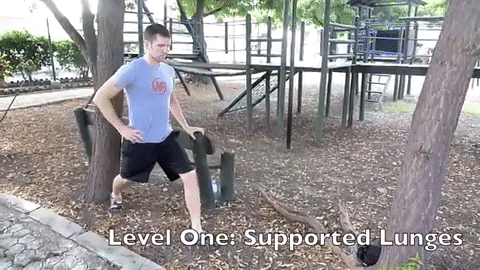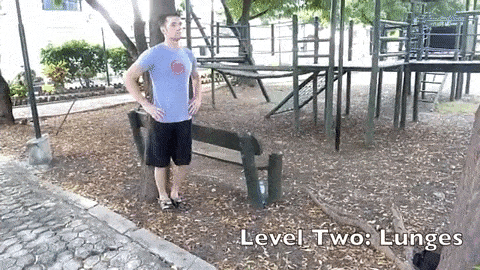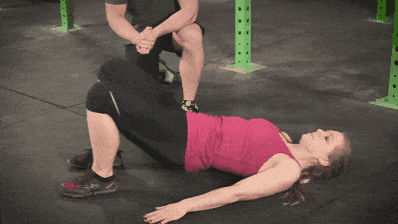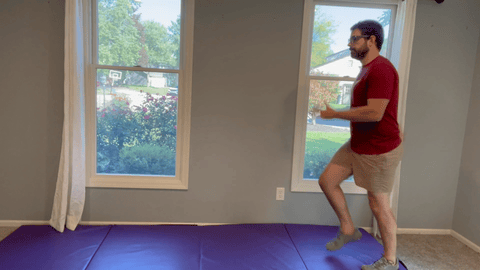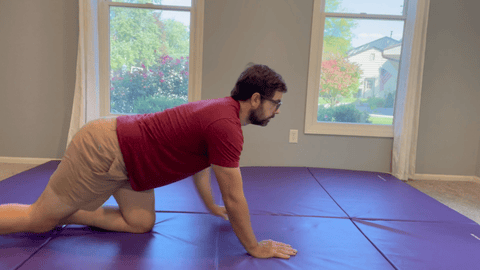

Today, you’re gonna learn the importance of warming up, and how to warm up with specific video routines…because I’m a nice person.
This is so critical for training safely that whenever we design a workout for our coaching clients, it always starts with a proper warm-up. So I’m excited to share these warm-up tips and tricks with you too.
In this guide, we’ll cover the following (click to go to that section):
This stuff is so important because getting injured sucks.
And every single day I watch people wander into the gym, immediately lie down on a bench, and start cranking out their workout with a heavyweight within seconds.
This makes me weep for humanity.
These people are just WAITING to get injured. They’re essentially playing with dynamite (also not recommended).


So you’re reading the right article.
Also, we’ve got a handy PDF that will walk you through the exact warm-up sequences we use with our Coaching Clients! You can snag that resource and a dozen of our other best resources by signing up for our newsletter right here:
Should I Stretch Before A Workout? No. Warm-Up Instead


Above all else, the most important thing you can do when working out is to warm up properly.
Now, you might be saying to yourself, “Come on. Surely it’s not the MOST important thing…”
To which I’d reply: “First, don’t call me Shirley. Secondly, if you don’t have enough time to warm up, then you don’t have enough time to work out.”
Boom!
So WHY is it so important?
Think of your muscles like rubber bands.
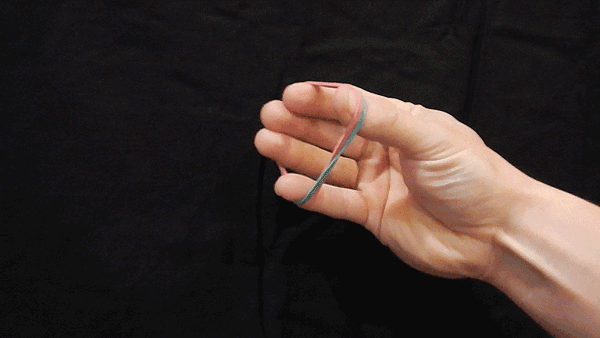

If you spend all day sitting at a desk, hunched over a keyboard, those rubber bands have gone almost completely unused.
Then, if you go to a gym and immediately start lifting heavy weights or sprinting really fast, those cold, unstretched rubber bands get pulled apart very quickly and can get snapped or pulled out of shape.
#Fail.
So, what about just regular, static stretching before working out?
Nope.
As we point out in “Should you stretch before or after your workout?“:
“A consolidation of studies showed there aren’t many benefits to static stretching before workouts.
For starters, static stretching will not result in the reduction of the chance of injury.
Also, static stretching can actually decrease your potential for strength gains and performance.”
However, dynamic warm-ups – what you’ll learn in this article and what we focus on with our 1-on-1 coaching clients – are AWESOME for prepping you to get ready to strength train:
Think of it like a pregaming for your muscles – except replace “alcohol” with “awesome.” By doing dynamic movements that mimic your workout, you are putting your muscles through their full range of motion and getting them ready to start handling heavier loads (strength training).
As pointed out in this study, “warming up” can also help reduce soreness after a workout.
On top of that, doing a dynamic warm-up can help activate your central nervous system, priming your muscles for a great workout that produces your best effort.
Add “improved blood circulation” to the list of benefits of warming up, which will help you perform well in each exercise.
Need another reason? When your body is properly warmed up, your muscles and joints are ready for maximum flexibility, which means you can perform each exercise with PROPER form (like deep barbell squats, for example) that maximizes results and minimizes the risk of injury.
So, whether you are running or strength training…a proper warm-up is probably the most important 5-10 minutes of your day.
Still with me?
Great. If you have been injured in the past, and you’re learning to warm up so you can stop stalling out on your progress, let us help!
We create custom workout solutions with nutritional guidance for busy people like you.
In other words, we help you get strong and eat better, every step of the way.
18 Best Beginner Warm-Up Exercises to Prevent Injury
The movements listed below will help you stay limber, mobile, and injury-free.
Your goal is to warm-up, not be tired out, so limit your warm-up to 5-10min max.
Pick 5-10 of these movements and perform them one right after the other for 30s-1min each at the beginning of your workout. That’s it!
Don’t overthink this: Your goal is to elevate your heart rate, put your muscles and joints through their range of motion to warm them up and make sure everything is functioning properly, and prepare your body to train!
1) ARM CIRCLES
2) HIP CIRCLES (like doing a hula hoop)
3) LEG SWINGS
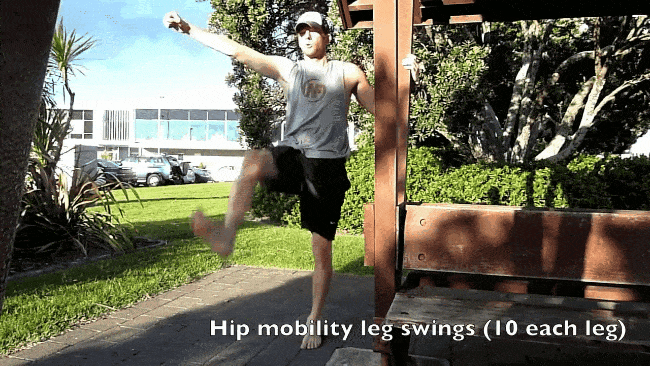

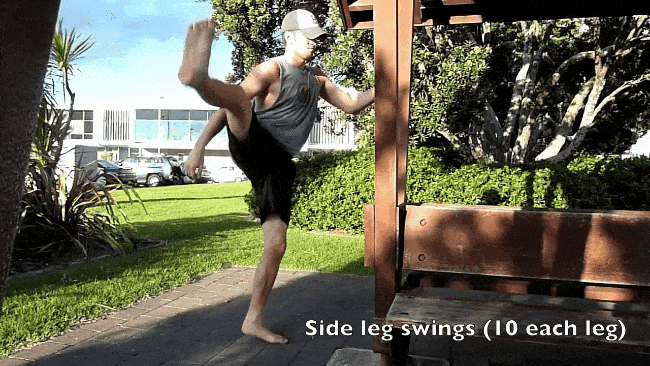

4) MARCH -OR- JOG IN PLACE
5) STEP JACK -OR- JUMPING JACK
6) SUPINE -OR- WALKING KNEE HUGS
7) WALL SLIDES
8) T-ROTATIONS -OR- SPIDERMAN LUNGES
9) INCHWORM
10) HIP ROTATIONS (like stepping over a fence)
11) BODYWEIGHT SQUATS
12) KNEE PUSH-UPS
13) REGULAR PUSH-UPS
14) SUPPORTED LUNGES
15) REGULAR LUNGES
16) HIP RAISES
17) SKIPPING
18) CRAWLING
You can add any general cardio to the mix here as well: stair climber, rowing machine, elliptical, bike, etc. Jumping on for a few minutes to get warm (especially if you are working out early in the morning) is a great idea.
3 Advanced Dynamic Warm-Ups And Videos
#1) Here is an Advanced Warm-up Circuit you can do anywhere:
- Jump rope: 2-3 minutes (optional)
- Jumping jacks: 50 reps(pull your shoulder blades back, extend arms and really focus on the movement)
- Bodyweight Squats: 20 reps
- Lunges: 5 reps each leg
- Hip extensions: 10 reps
- Hip rotations: 10 reps each leg (like you’re stepping over a fence)
- Forward leg swings: 10 reps each leg.
- Side leg swings: 10 reps each leg
- Push-ups: 10-20 reps
- Spider-man steps: 5 each leg
This particular warm-up might be more difficult than your actual workout, especially if you’re following something like The Beginner Bodyweight Workout.
Yes, there is a lot of work put on your hips, butt, legs, and core. As nerds/desk jockeys, these tend to be the muscles that are the tighest and least active, and thus most susceptible to an injury.
If your arms and chest are particularly tight or sore, you can throw two more movements as well:
- Controlled Shoulder Circles (keeping the rest of your body stable, draw the biggest circle possible with your arm reaching as far as you can in each direction)
- Controlled Hip Circles (keeping the rest of your body stable, draw the biggest circle possible with your knee/leg, reaching as far as you can in each direction)
Are you a runner?
#2) Check out our warm-up routine specifically designed for runners:
You can also check out our Beginner’s Guide to Running for more tips on how to run safely.
#3) Here’s another advanced dynamic warm-up for an endurance workout:
How to Warm-Up for Strength Training


When it comes time for your workout, if you are doing heavy strength training (with barbells or dumbbells), make sure you do some warm-up sets before jumping into the weight you’ll be training with for EACH EXERCISE.
This is equally, if not more important, than your general dynamic warm-up.
Warm-up sets (using lighter weights or intensities than the ones you will be performing in your actual workout) better prepare your muscles and connective tissue for the specific activity you are about to do.
It also allows you to practice technique at lower intensities, which is helpful not only for warming up, but for improving your form.
I repeat, the biggest mistake you can make is jumping straight to your heavy working sets in your strength training workout without using lighter warm-up sets.
We recommend you do 2-3 warm-up sets with gradually increasing weight.
Step 1) Pick a much lighter weight/variation of the exercise you are planning to do (something you could do for ~20 reps.) Perform that lighter variation for 8 reps.
Example: Maybe you normally do push ups from the floor in your workout. For your warm-up, you may do push-ups off of a countertop.
Step 2) Then pick something you could do for ~10 reps. Perform that moderate variation for 4 reps.
Example: In the same vein, if you are doing push-ups for your workout, maybe you do knee push-ups for this warm-up set.
Listen to your body! If you need an additional lighter warm-up set, go ahead and add it in. You do you, boo. And your needs may change day-to-day.
Don’t forget, you can grab our handy infographic covering all these details by signing up for our newsletter and free guides:
Warm-Up Properly and Avoid Injury!


Hopefully, this is a post you bookmark, as it’s probably one of the most important ones I’ve ever written.
If you want to stay injury-free, put your body through a dynamic warm-up before you start your exercise.
If you are somebody who wants to follow a program that is tailor-made for their life and situation and goals, check out our popular 1-on-1 Coaching program.
You’ll work with our certified NF instructors who will get to know you better than you know yourself, answer any and all fitness questions you have, and program your workouts and nutrition for you.
What other questions can I answer for you about warming up properly?
I’m here to help!
-Steve
PS: The companion post to this guide is “How to Stretch After a Workout.” Give it a read if you’re wondering about what post-workout routines you should try.
###
All photo sources can be found right here.[1]

